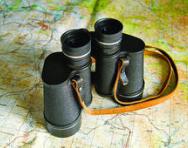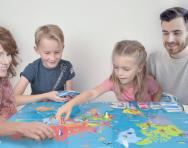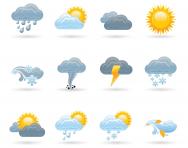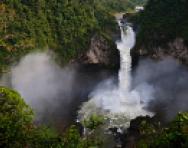13 ways to get children excited about geography

1. Play ‘Name a country’ at the dinner table, or in the car. Each player takes it in turns to name a country, starting with A, then B, then C, then D, etc. If you get stuck, look through an atlas and discover a new part of the world! Make the game more challenging by doing the same for capital cities and famous landmarks (quite tricky!), famous rivers, volcanoes, mountains, seas and so on.


Boost Your Child's English & Maths!
- Weekly programme for each school year
- Worksheets sent direct to your inbox
- Keeps your child's learning on track
2. Play geography mastermind: which member of the family can name the most countries and their capital cities in 60 seconds? Allow different challenge times for children of different ages.
3. Design your own country. Give it a name and draw its outline on a big piece of paper; plot its capital city, some exciting landmarks and interesting places to visit. What type of animals and plants can be found in your country? What language is spoken, what food is eaten and what is the national currency?
4. Discover the world of surveying and why it’s so valuable in protecting the world (detecting bombs, studying planets, finding diamonds, monitoring wildlife, building bridges, measuring earthquakes and volcanoes and lots more!). Get Kids into Survey is an online hub of free resources with lesson plans, quizzes, colouring sheets and The GeoSquad Comic.
5. Organise a field trip! Locate a local geographical feature – a river, stream, hill, coastline, island, mountain or valley – and locate it on a map, then visit it.
6. Flick through an atlas and look for strange and wonderful place names. Can you pronounce them correctly and find out two facts about them?
7. Use the free map on Google Earth to see the world in satellite photo form. Gaze over the landscapes, zoom in and imagine what life is like in the Sahara, the Serengeti or Siberia. We've also become addicted to a new geography guessing game, GeoGuessr, which asks you to guess locations based on images... challenge the whole family!
8. Mark all the countries people in your family have been to on a map. How many continents have they visited?
9. Try the inflatable globe game. Throw a plastic globe in the air; whoever catches it has to name the places where their thumbs have landed. If their thumb lands on a country ask the player to name its capital and a river or mountain range found within it.
10. Play BBC Bitesize's KS1 geography game Pirate Bunnies: World Adventures and earn treasure by discovering the world's seven continents and five oceans, sailing north, east, south and west, spotting the features of different seasons, exploring the United Kingdom and discovering flags from around the world.
11. Put together a collection of toy animals. Can you place them on a big map according to where they come from?
12. Make the most of the latest phone apps and games – the engaging and very addictive Stack the Countries will get KS1 and KS2 children up to speed with the world’s geography in no time.
13. Construct a weather station in your garden. A cut-open plastic bottle can be a rain guage (mark centimeters up the side), a compass can help identify the direction of the wind and, if you cut the toe off a lightweight sock and attach it to a stick, it will literally become a wind sock. Make a chart and record the weather for a period of time and see how much it changes. You can also get more sophisticated with thermometers, barometers and anemometers, and why not present your findings as a weather report?
Oddizzi is an engaging new cross-curricular teaching resource designed to bring the world to life for Early Years Foundation stage, Key Stage 1 and 2 pupils.

Give your child a headstart
- FREE articles & expert information
- FREE resources & activities
- FREE homework help








